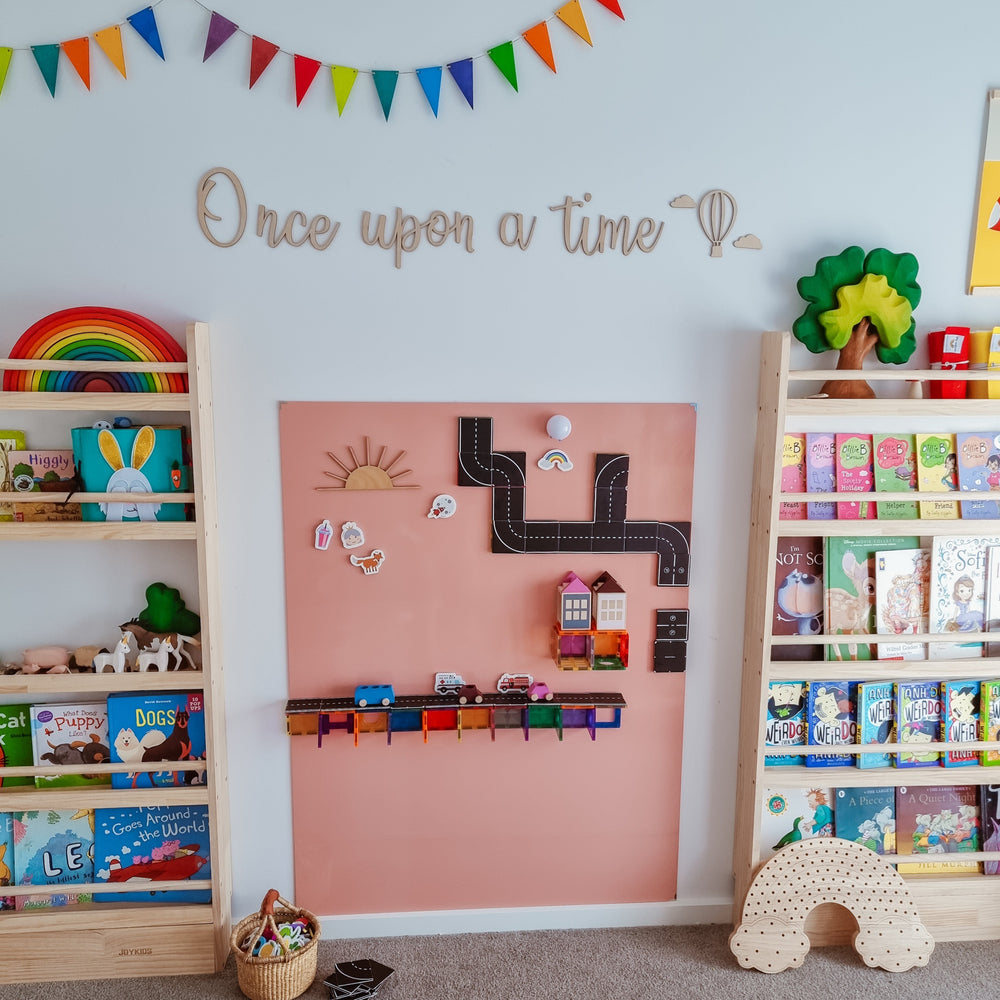6 Compelling Reasons to Introduce Vertical Play in Early Childhood
Vertical play is more than just fun as we discussed in our previous blog, i’s a crucial aspect of early childhood development. Here are 6 reasons, backed by research, why children should engage with vertical surfaces for play, learning, and development.
1. Fine Motor Skills and Coordination
Enhancement of Fine Motor Skills: Activities on vertical surfaces like drawing and painting not only provide enjoyment but also bolster fine motor skills, which are essential for tasks such as writing, using cutlery, and dressing. These skills are foundational for academic tasks like handwriting and using tools like scissors.
2. Visual Perception and Spatial Awareness
Improved Hand-Eye Coordination: Engaging in vertical play can refine a child’s hand-eye coordination, which is vital for activities that require precision, such as catching a ball or threading beads.
3. Promotion of Visual Perception Skills
Promotion of Visual Perception Skills: Vertical play enhances visual perception skills, aiding in the ability to judge distances and spatial relationships, which are important for sports and navigating through complex environments.
4. Bilateral Coordination and Integration
Encouragement of Bilateral Coordination: Using both hands in activities like climbing or reaching for objects on a vertical plane promotes the development of bilateral coordination, a skill necessary for tasks such as typing or playing musical instruments.
5. Self-Regulation and Attention
Promotion of Self-Regulation Skills: Focused activities on vertical surfaces can help children learn to manage their emotions and behaviors, which is crucial for social interactions and collaborative work in school settings.
Enhanced Attention Span: By engaging with vertical surfaces, children can develop a longer attention span, which supports their ability to follow through on tasks and remain engaged in learning activities.
6. Overall Motor Development
Development of Postural Control and Core Stability: Vertical play strengthens the muscles needed for postural control and core stability, which are essential for physical activities like sports, dance, and maintaining balance during movement.
Incorporating vertical play into your child’s day can significantly contribute to their overall development. Whether it’s through drawing on a chalkboard or climbing, vertical play is an investment in your child’s future, equipping them with the skills needed for success in real-world tasks.
References
- (n.d.). Enhancement of Fine Motor Skills. Retrieved from https://link.springer.com/referenceworkentry/10.1007/978-1-4419-1698-3_619
- (n.d.). Occupational Therapy for Children. Retrieved from https://archive.org/details/occupationalther0000unse_l5r9
- Mraz, L. (n.d.). Proximal Stability. Retrieved from https://drlauramraz.com/proximal-stability/
- Cerebellum and Ataxias. (2020). The Role of the Cerebellum in Motor Function and Development. Retrieved from https://cerebellumandataxias.biomedcentral.com/articles/10.1186/s40673-020-00123-z
- (2010). The Impact of Hand-Eye Coordination on Learning. Retrieved from https://link.springer.com/article/10.1007/s00221-010-2456-3
- The OT Toolbox. (n.d.). Visual Perceptual Skills. Retrieved from https://www.theottoolbox.com/visual-perceptual-skills/
- (n.d.). Assessment and Intervention of Visual Perception and Cognition. Retrieved from https://www.miota.org/docs/Assessment_and_Intervention_of_Visual_Perception_and_Cognition3.pdf
- Oxford University Press. (n.d.). Abstracts on Bilateral Coordination and Integration. Retrieved from https://academic.oup.com/book/41218/chapter-abstract/350687914?redirectedFrom=fulltext
- (2021). Cognitive Aspects of Bilateral Coordination. Retrieved from https://link.springer.com/article/10.1007/s10339-021-01046-1
- (n.d.). Postural Control and Core Stability. Retrieved from https://link.springer.com/chapter/10.1007/978-3-319-08141-0_44
- (n.d.). The Importance of Attention in Early Childhood. Retrieved from https://www.jstor.org/stable/23468929
- Behavioral and Brain Functions. (2024). Self-Regulation and Attention in Children. Retrieved from https://behavioralandbrainfunctions.biomedcentral.com/articles/10.1186/s12993-024-00232-3
- (2021). Reading and Visual Perception. Retrieved from https://link.springer.com/article/10.1007/s11145-021-10165-2
- Autism Spectrum News. (n.d.). The Power of Sensory Integration. Retrieved from https://autismspectrumnews.org/the-power-of-sensory-integration-enhancing-communication-for-non-speaking-individuals/
- (2023). Cognitive Flexibility and Sensory Integration. Retrieved from https://link.springer.com/article/10.1007/s12144-023-05453-9





